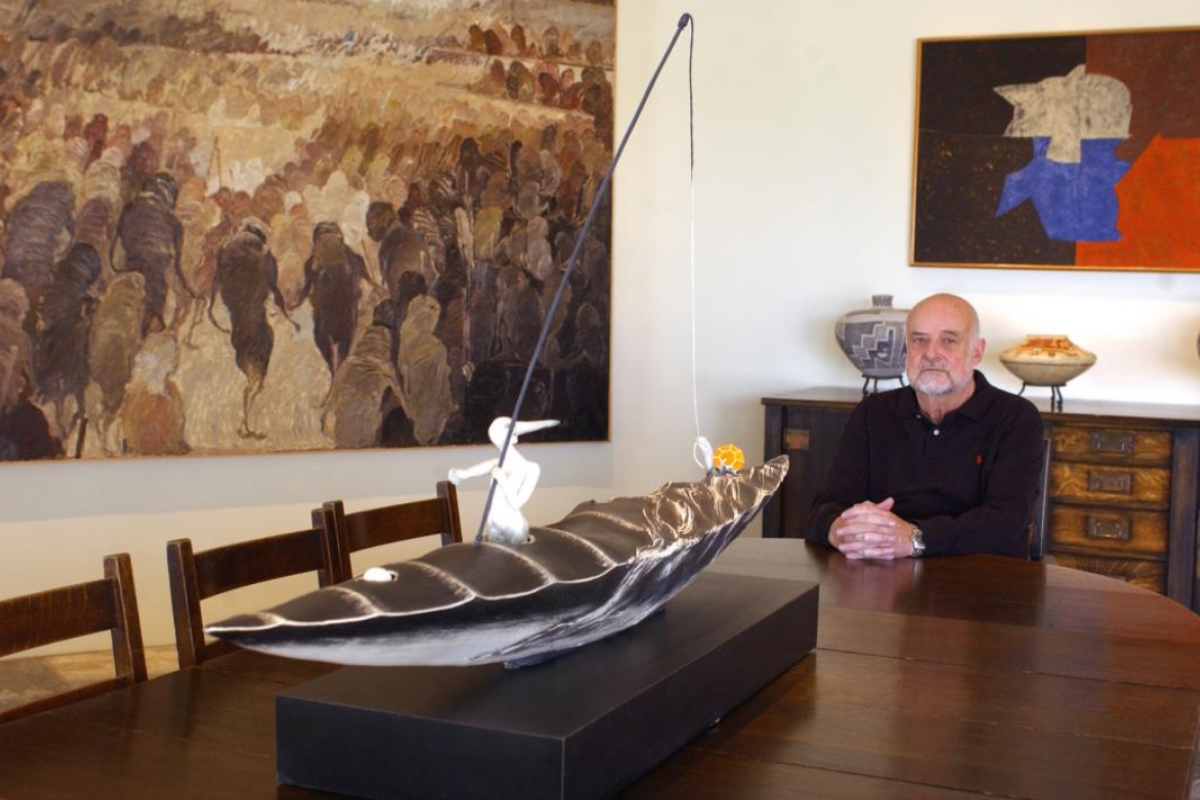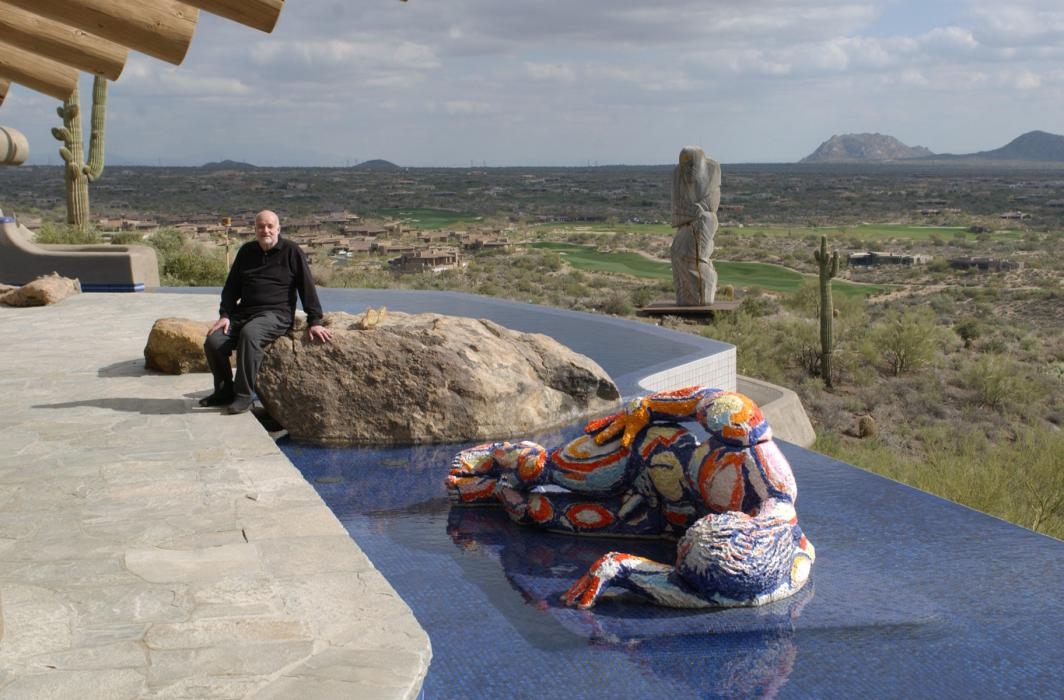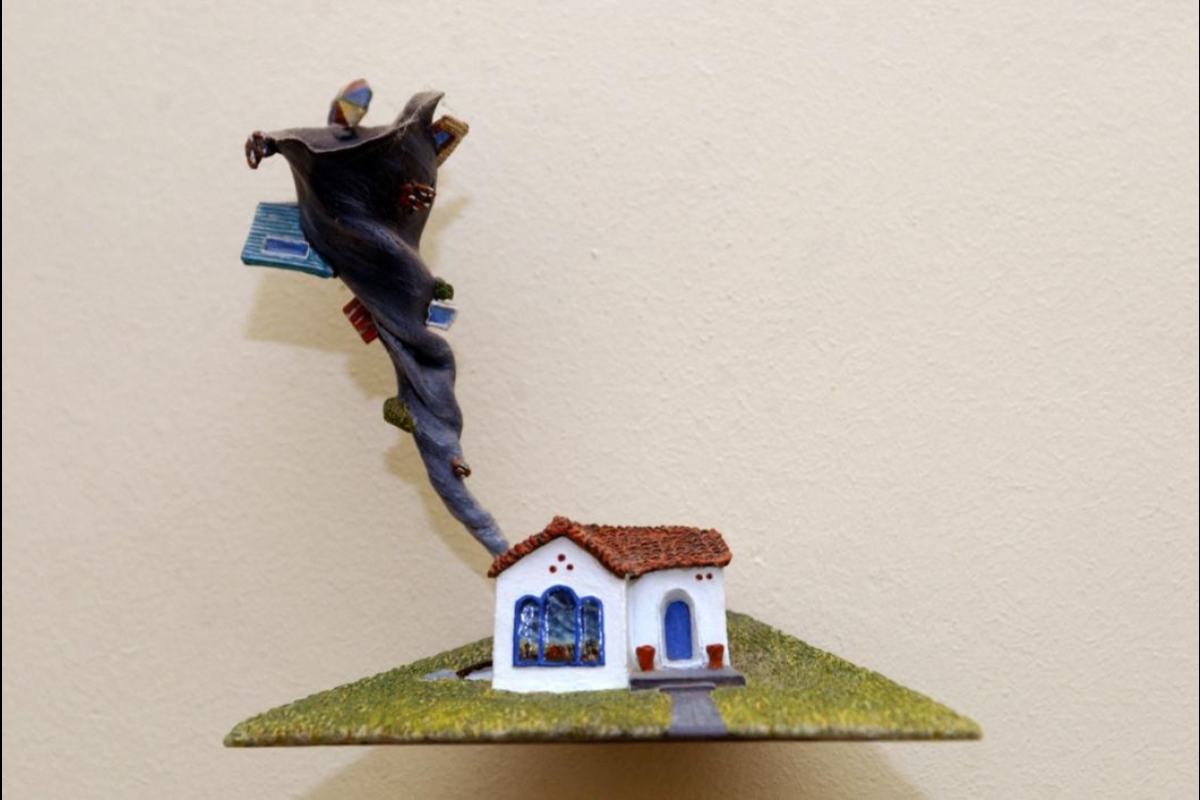Leading art collector and philanthropist donates $4 million in ceramics to Arizona State University Art Museum

Stphane Janssen in his home with a small portion of his ceramics collection. Janssen and his late partner R. Michael Johns designed an entire room in their Scottsdale home to display just a portion of their ceramics collection.
Photo courtesy of Herberger Institute for Design and the Arts
TEMPE, Ariz. – The Arizona State University Art Museum will receive nearly $4 million in contemporary ceramics from Arizona resident and Belgian native Stéphane Janssen, considered one of the world’s leading collectors of contemporary art.
The donation consists of Janssen’s entire ceramics collection, with the exception of the works in his home – which are a promised gift to ASU – and his historic and contemporary Native American collection. Except for select pieces earmarked for the ASU Art Museum, the bulk of Janssen’s Native American work will be donated to the National Museum of the American Indian, which opens this fall on the National Mall in Washington, D.C
Janssen, a longtime supporter of the ASU Art Museum, will donate 686 ceramic works to the museum’s Ceramics Research Center immediately and is offering another 200 pieces for the museum to sell to raise money for additional acquisitions.
Janssen’s ceramics collection was acquired over a decade with his late partner, ceramist R.
Michael Johns. To be officially named The Stéphane Janssen and R. Michael Johns Collection, it includes work by major American and international ceramists, including Robert Arneson, Akio Takamori, Jun Kaneko, Viola Frey, Adrian Saxe, Richard Notkin, George Ohr, Ruth Duckworth and Harrison McIntosh, as well as a variety of emerging artists.
Janssen’s decision to donate his collection to the museum’s Ceramics Research Center grew out of his love for Phoenix, his admiration for the philosophy of the newly opened CRC and the desire to keep his collection together.
“I think the freedom in a university museum is much stronger than in many museums and galleries,” Janssen said. “It is important to expose young people to good art while they are still developing their tastes and sensibilities.”
He said he likes the fact that the CRC embraces an open storage concept that enables visitors to see the majority of the collection, instead of having it hidden away in vaults most of the time. “It keeps the work alive,” he added.
The Janssen gift is the third major donation of private ceramics collections to the ASU Art Museum in the past six years. His gift follows that of the Anne and Sam Davis collection in 1998, and the promised gift of the Sara and David Lieberman collection two years ago.
“ The Ceramics Research Center has achieved international status as a venue for 20th century and contemporary American and British ceramics,” said museum director Marilyn Zeitlin.
Janssen’s relationship with the ASU Art Museum began under its previous director, Rudy Turk, who initiated the museum’s now world-class ceramics collection, and has continued with a close friendship between Janssen and Zeitlin.
Janssen, who said he gains joy from donating to museums, has provided approximately $1.5 million in artwork to the ASU Art Museum over the past decade. Among those is one of the museum’s most popular pieces, Alexander Graham Bell, the video robot by Nam June Paik, a video art pioneer. In addition, several exhibitions at the museum during the past few years have been drawn exclusively from Janssen’s personal holdings.
Janssen estimates his total art collection to number about 4,000 pieces, many rotated in and out of his homes in Scottsdale, Ariz., and Belgium. Other collections have been loaned out for exhibition.
Janssen’s ceramics collection was built combining two approaches – choices made with Johns’ studied eye for technical merit and those made with Janssen’s eye for pure aesthetic. The result is extraordinary diversity – from massive figurative sculptures that grace the hills, patios, entry and even the pool of Janssen’s Arizona estate, to delightfully whimsical bowls and teapots, some of which were created by Johns.
“ If a child visiting the museum looks at one of the pieces of art and thinks, ‘I need to be an artist or a collector or a patron of the arts,’ then my life will have been worth something,” Janssen said.
The ASU Art Museum has been named “the single most impressive venue for contemporary art in Arizona” by Art in America. It is part of The Katherine K. Herberger College of Fine Arts at Arizona State University.
Media Contact:
Denise Tanguay
480.965.7144
denise.tanguay@asu.edu


